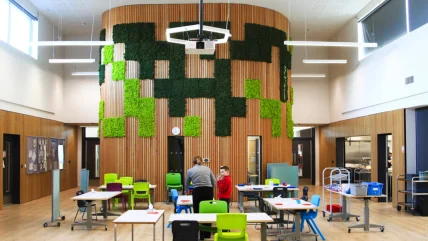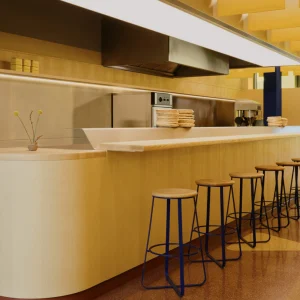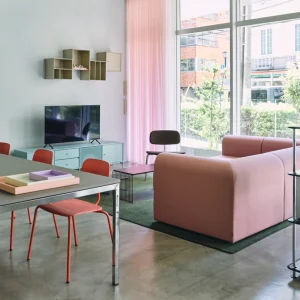
Space Zero, a strategic design consultancy, has announced plans for a recruitment drive to support its growth strategy.
The company, which specialises in educational projects, has said it will grow its 42-strong team by recruiting eight new members in strategy, design and procurement roles.
Under the Department for Education’s £15.4bn Construction Framework 25 (CF25), starting in 2026, Space Zero is preparing to support modernisation, optimisation and capacity-building efforts across the public education estate, building on its success delivering schools through the previous CF21 framework.
Space Zero’s growth is also being driven by a £1m-plus annual investment in research and innovation.
Wayne Taylor, founder and CEO of Space Zero, said: ‘Space Zero’s growth is underpinned by our international reputation for delivering on our promise: to reimagine learning environments in ways that improve outcomes, unlock potential, enrich lives, and enhance well-being. Our mantra is that we don’t just design classrooms, we help shape futures.
‘Growth, for us, isn’t just about numbers. We’re scaling with purpose, to reach more communities and deliver schools that genuinely change lives, backed by world-class, fully integrated solutions from strategy to fit-out, without compromising quality.
‘As education faces outdated infrastructure, tighter budgets, inclusion demands and rising expectations, our message is clear: build better or fall behind.
‘Investing in our talented and brilliant people is central to maintaining our momentum and continuing to drive positive change across the education sector.’
Taylor added: ‘We’re moving beyond traditional design to become a full-spectrum education change partner, reimagining how space, technology, and human experience come together to transform learning — not just for today, but for the next generation. By applying emerging technologies and future-focused thinking, from neurodiverse and trauma-informed environments to biophilic design, we deliver projects with proven cognitive, emotional, and social benefits far beyond aesthetics.’





